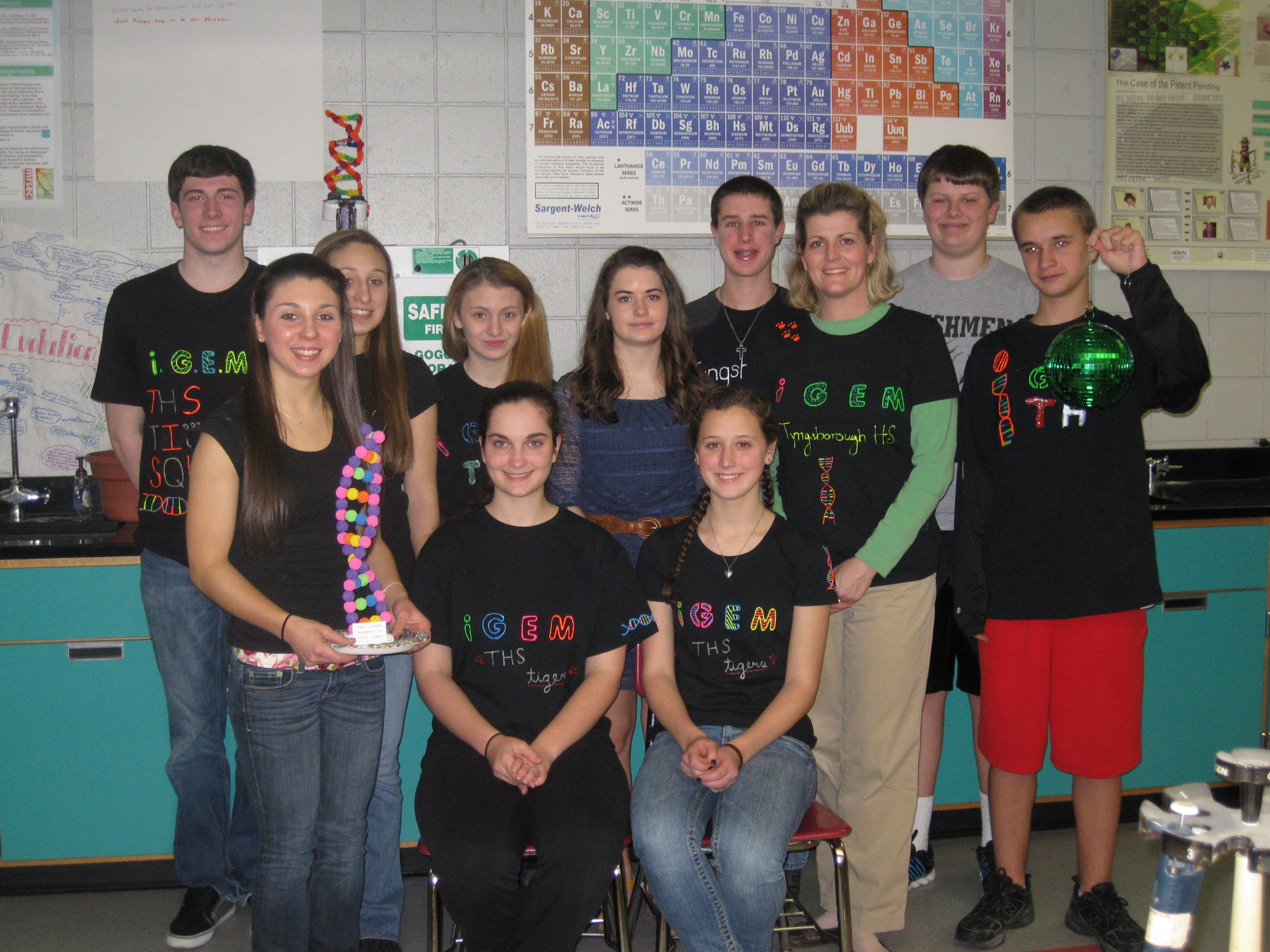Team:Tyngsboro MA Tigers
From 2012hs.igem.org
- a team description
- project description
- safety information (did your team take a safety training course? were you supervised in the lab?)
- team attribution (who did what part of your project?)
- lab notebook
- sponsor information
- other information
Example: 2012hs.igem.org/Team:Tyngsboro_MA_Tigers/Our_Pets
| You can write a background of your team here. Give us a background of your team, the members, etc. Or tell us more about something of your choosing. | |
|
Tell us more about your project. Give us background. Use this as the abstract of your project. Be descriptive but concise (1-2 paragraphs) | File:Tyngsboro MA Tigers team.png Your team picture |
| Team Tyngsboro_MA_Tigers |
| Official Team Profile |
|---|
Contents |
Team
We're the twelve-strong inaugural Tiger Squad at Tyngsborough High School in Tyngsborough, Massachusetts, with a real interest in using our science knowledge to help the community and learn about synthetic biology along the way!
Kathleen Barrett (Liaison)
Mia Pavao (Secretary)
Lizzy Seltz (Lab Manager)
Michael Sheets (Media Specialist)
Elizabeth Barrett (Public Relations)
Madison Vigneault (Treasurer)
Taylor Vigneault (Treasurer)
Project
The Problem:
A colorless, odorless, and soundless killer takes the lives of nearly 2,100 innocent United States citizens every year; that is an average of 3 people every day. CO poisoning is the leading cause of unintentional poisoning deaths in the United States and 1 in every 2,400 people falls victim to CO poisoning. Males are 2.3 times more likely to die from CO poisoning than females and people over the age of 65 have the highest risk of dieing from the silent killer. Only by being aware of the grave danger, and understanding the structure and works of the gas, we can create a circuit giving a scent to CO.
Citation "Carbon Monoxide Poisoning Statistics." Christensen Law Firm. 03 Sept. 2010. Web. 1 Mar. 2012. [<http://www.utahpersonalinjurylawfirm.com/2010/09/carbon-monoxide-poisoning-statistics/>].
Our Idea:
We are looking to develop a genetic circuit for bacteria that converts the odorless carbon monoxide into a malodorous output. Coupled with the common household detector, we might be able to reduce even further CO-related deaths.
Notebook
Show us how you spent your days.
Results/Conclusions
What did you achieve over the course of your semester?
Safety
File:Safety Contract-1.pdf What safety precautions did your team take? Did you take a safety training course? Were you supervised at all times in the lab?
Attributions
Who worked on what?
Human Practices
What impact does/will your project have on the public?
Fun!
What was your favorite team snack?? Have a picture of your team mascot?
<forum_subtle />
 "
"
